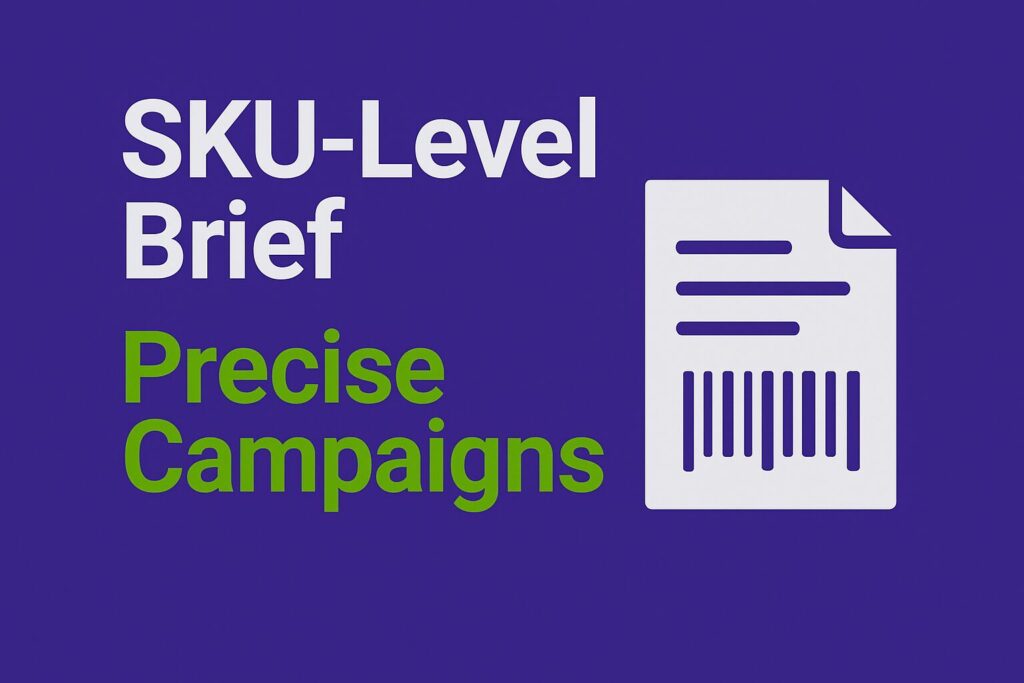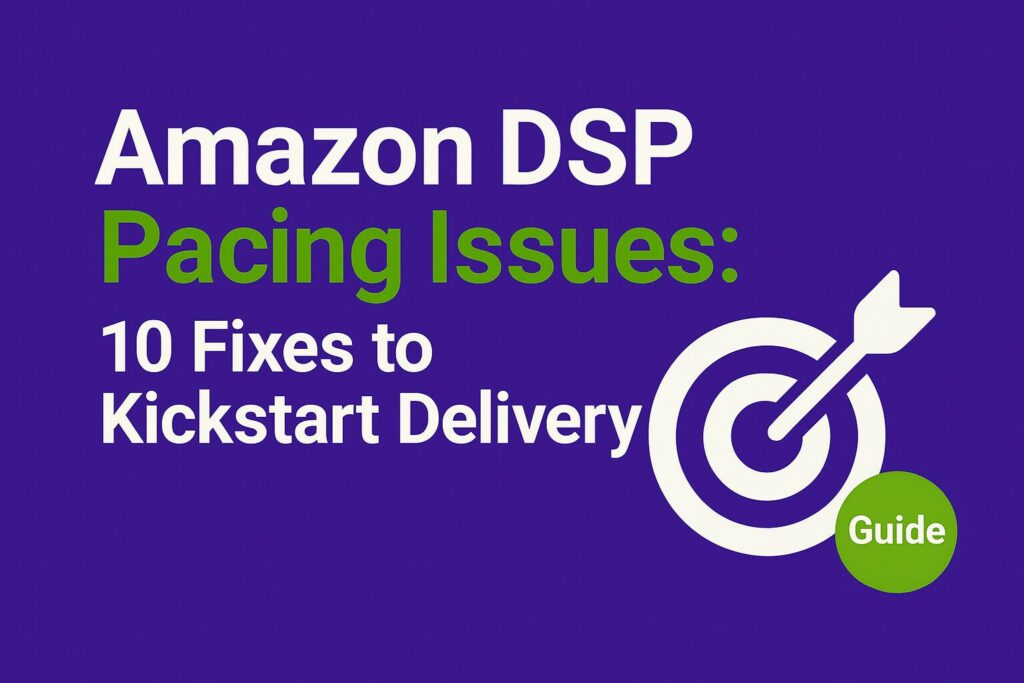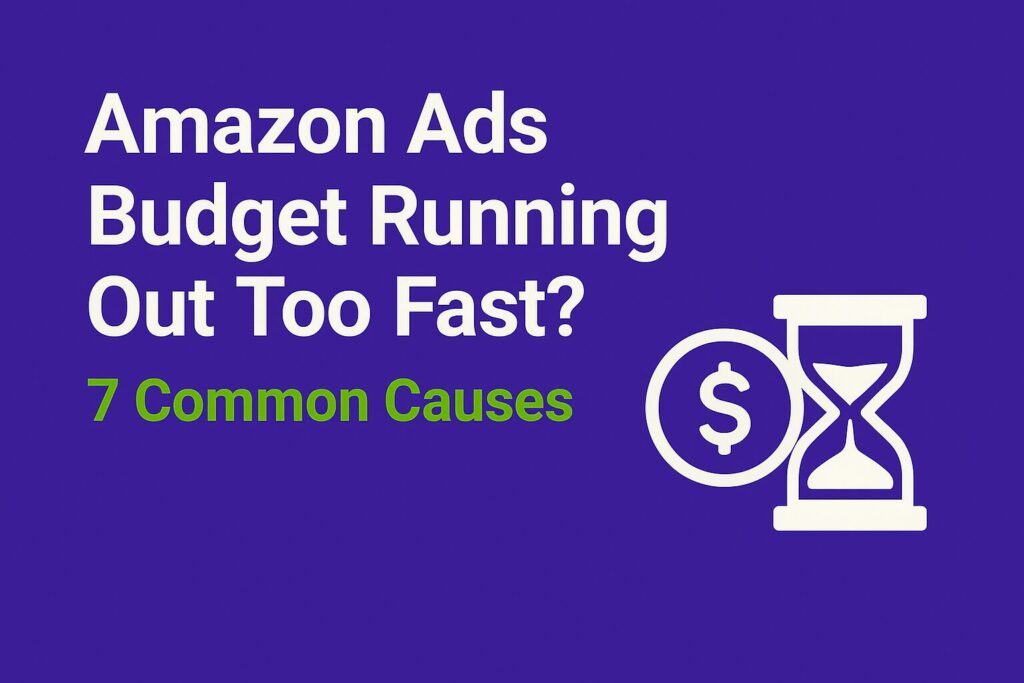In Amazon Ads, a campaign may look profitable on the surface — ACOS is stable, ROAS appears healthy, and daily budgets are consistent. Yet, when overall profitability is reviewed, margins keep shrinking.
Hidden costs are the invisible factors that quietly erode performance. They include inefficient spend, structural leaks in campaign setup, and external pressures like rising CPCs or poor retail readiness.
This article explores the main hidden costs in Amazon Ads and how advertisers can identify and reduce them to protect overall profitability.
1. Overlapping Campaigns and Keyword Cannibalization
When multiple campaigns target the same keywords or ASINs, they compete against each other, artificially inflating CPC.
Example:
Two campaigns — one manual and one auto — both target wireless headphones. Each ends up bidding against the other, raising CPC and splitting conversions.
Fix:
- Audit campaigns for keyword overlap.
- Separate branded vs. generic, and manual vs. auto targeting.
- Consolidate redundant campaigns.
📘 Related reading:
→ Amazon Ads Budget Running Out Too Fast? 7 Common Causes and Fixes
→ ACOS Rising? How to Stop Performance from Declining
2. Inefficient Bidding Strategies
Dynamic bidding and aggressive placement modifiers can overspend without proportional returns. Even small bid increases multiply costs across high-volume traffic.
Fix:
- Review Placement Reports to ensure multipliers deliver ROI.
- Use Dynamic Bidding – Down Only for efficiency.
- Cap aggressive modifiers on high-volume placements.
External resource: Amazon Ads Help – Bidding Strategies
3. Retail Readiness Gaps
Even well-optimized campaigns lose efficiency if product pages fail to convert. Missing information, poor reviews, or uncompetitive prices silently raise ACOS.
Fix:
- Ensure PDPs meet retail readiness standards: detailed copy, multiple images, and 4+ star ratings.
- Audit price competitiveness regularly.
- Avoid promoting ASINs with low stock or poor availability.
External resource: Improve Your Advertised Product Listings – Amazon Ads Guide
4. Attribution Delays and Cross-Device Gaps
Attribution on Amazon can take up to 14 days. Performance may appear weaker initially, leading to premature bid cuts. In parallel, shoppers switching between devices can obscure conversion tracking.
Fix:
- Evaluate campaigns on 14-day attribution windows.
- Use Amazon Marketing Cloud (AMC) to analyze multi-touch journeys.
- Avoid reactive bid changes based on early data.
External resource: Amazon Marketing Cloud Overview
5. Missed Negative Keywords
Without negative keywords, campaigns keep showing ads on irrelevant searches, generating spend with no conversions.
Fix:
- Update negatives weekly from Search Term Reports.
- Centralize negatives across campaigns to prevent overlap.
External resource: Amazon Ads Help – Negative Keywords
6. Poor Campaign Structure and Data Visibility
A lack of structure makes optimization harder. When campaigns mix multiple objectives or targeting types, data becomes noisy and less actionable.
Fix:
- Build campaigns by objective and targeting type.
- Use portfolios for budget grouping.
- Maintain clear naming conventions.
Related reading:
→ Amazon Ads Not Converting? 5 Mistakes to Avoid
7. Platform Fees and Overhead
Beyond ad spend, management fees, tools, and integrations impact profit margins. A campaign with strong ROAS can still be unprofitable once overhead is included.
Fix:
- Include tool and platform fees in profitability analysis.
- Reassess tool ROI every six months.
- Balance automation with manual control.
8. Inefficient Creative Rotation
Stagnant Sponsored Brands or DSP creatives lose engagement, decreasing CTR and indirectly increasing CPC.
Fix:
- Rotate creatives every 6–8 weeks.
- Refresh visuals and messaging.
- Track CTR trends to identify fatigue.
9. Excessive Focus on Short-Term Metrics
Optimizing solely for ACOS or ROAS can ignore long-term effects. Awareness or remarketing campaigns may look inefficient short term but build sustained growth.
Fix:
- Evaluate new-to-brand sales and incremental reach.
- Combine Sponsored Ads with Amazon DSP for full-funnel measurement.
External resource: Amazon DSP Overview
10. Data Fragmentation Across Tools
Using multiple dashboards (Seller Central, DSP, AMC, analytics tools) without alignment leads to inconsistent data and misinformed decisions.
Fix:
- Consolidate reporting through Amazon Ads Reports or third-party dashboards (Pacvue, Helium 10).
- Align attribution windows across platforms.
- Establish a unified data taxonomy.
External resource: Amazon Ads Reports Overview
FAQ
Hidden costs in Amazon Ads refer to the less visible factors that reduce campaign profitability, such as keyword overlap, inefficient bidding, poor product detail pages, or lack of optimization. These costs are not always visible in performance dashboards but can significantly affect margins over time.
When multiple campaigns target the same keywords or ASINs, they compete against each other, inflating CPC and splitting conversions. Consolidating campaigns and separating branded vs. generic targeting helps eliminate this inefficiency.
If product detail pages are incomplete or lack strong visuals and reviews, conversion rates decline. Even with stable CPC, a drop in conversion drives ACOS higher, reducing campaign efficiency.
A full campaign audit should be performed monthly or quarterly, depending on spend level. Weekly checks on reports such as Search Term, Placement, and Budget Reports help identify inefficiencies early.
Automation tools like Pacvue or Sellics improve bidding efficiency but do not replace strategic oversight. Hidden costs can still occur through misaligned targets, overlapping campaigns, or poor creative performance.
Yes. On Amazon DSP, inefficiencies can arise from overly broad audience segments, underperforming creatives, or poor frequency management. Regular reporting and creative rotation are essential to maintain ROI.
Advertisers can minimize hidden costs by maintaining a clean campaign structure, updating negative keywords regularly, monitoring performance data weekly, and ensuring that PDPs and pricing remain competitive.
Not necessarily. Some “hidden” costs reflect long-term investments — such as awareness campaigns or new-to-brand reach — that may look inefficient short-term but drive future growth. The key is distinguishing strategic spend from waste.
Conclusion
Hidden costs in Amazon Ads are not visible in dashboards, yet they can erode margins and weaken ROI. They often come from overlapping campaigns, inefficient bidding, weak PDPs, poor structure, or neglected negatives.
By identifying these invisible inefficiencies, advertisers can stabilize ACOS, protect margins, and allocate budgets more strategically.
👉 Next in the series: Impressions Dropping? How to Diagnose and Recover Campaign Visibility.
Senior E-commerce & Retail Media Leader with 8+ years across Amazon and leading marketplaces. Focus on full-funnel strategy, programmatic retail media, and international media governance. Sharing frameworks and operating models for growth.



